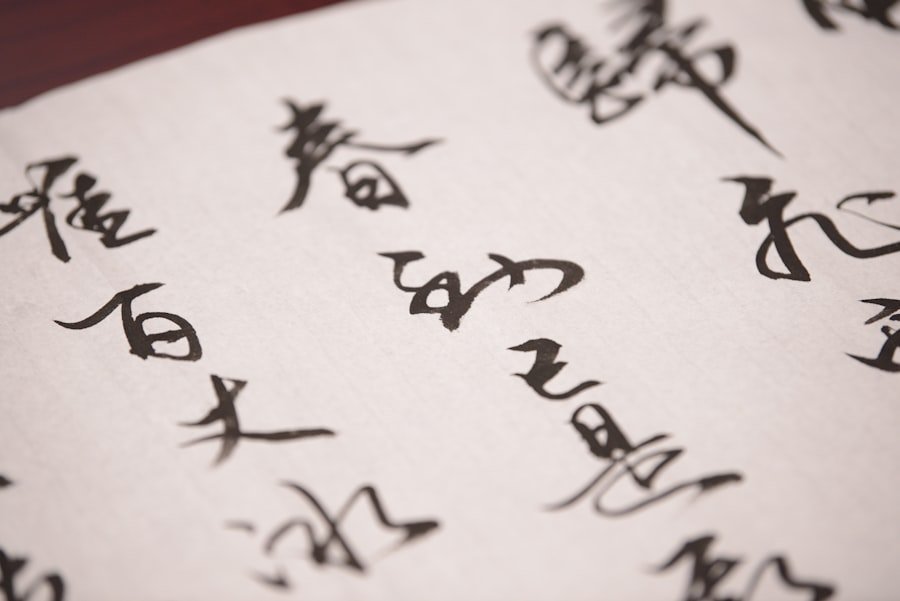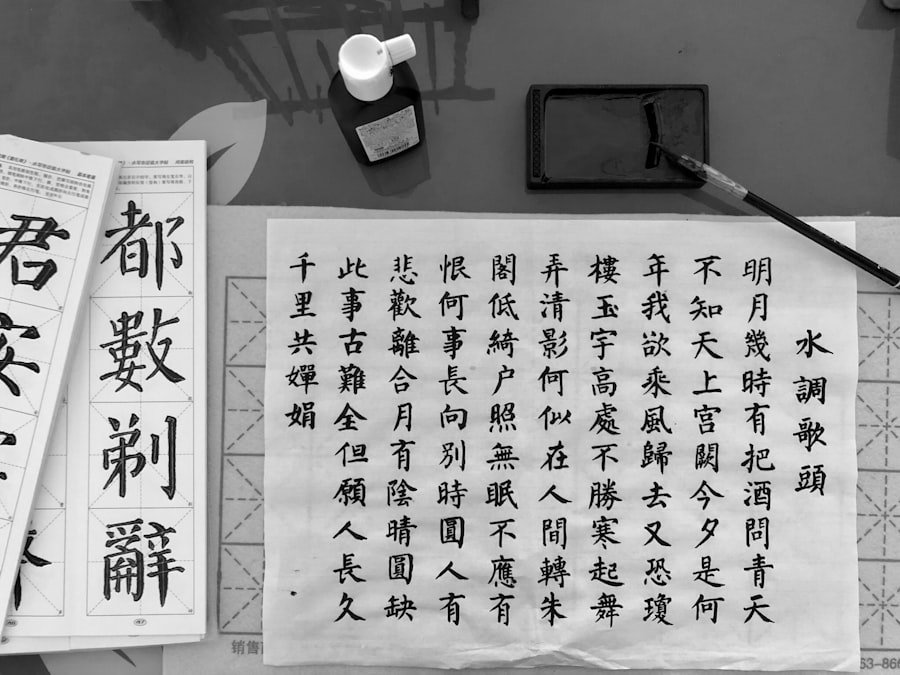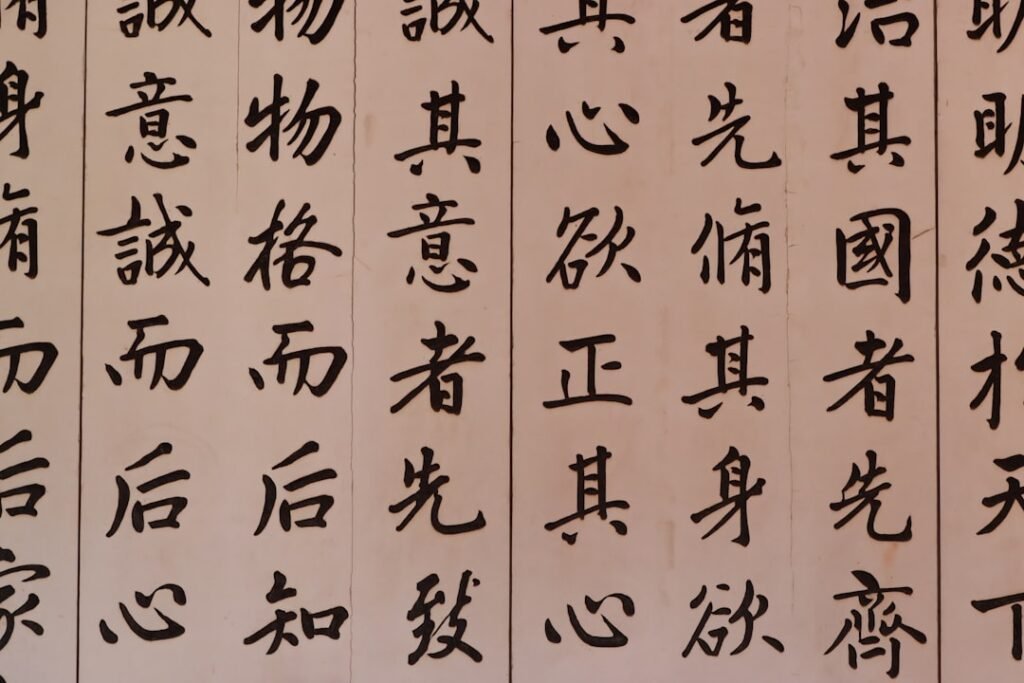Chinese calligraphy is an ancient art form that transcends mere writing; it is a profound expression of culture, philosophy, and aesthetics. Rooted in thousands of years of history, this practice combines the beauty of brush strokes with the intricacies of Chinese characters, creating a visual language that speaks to the soul. Each stroke is imbued with meaning, reflecting the calligrapher’s emotions and thoughts, making it not just a craft but a meditative practice.
The elegance of Chinese calligraphy lies in its ability to convey complex ideas through simple yet powerful forms, inviting both the creator and the observer into a world of contemplation and beauty. As an art form, Chinese calligraphy is not only about the final piece but also about the journey of creation. The tools used—brush, ink, paper, and inkstone—each play a vital role in shaping the outcome.
The choice of materials can significantly influence the texture and flow of the strokes, while the environment in which one practices can enhance focus and creativity. For those interested in delving into this captivating world, courses at institutions like the LC Chinese School in Oslo offer an excellent opportunity to learn from experienced instructors. These courses provide a structured approach to mastering the techniques of calligraphy, allowing students to explore their artistic potential while gaining a deeper appreciation for this timeless art. Master the art of Chinese calligraphy. Enroll now at the LC Chinese School in Oslo.
Table of Contents
ToggleSummary
- Chinese calligraphy is a traditional art form that requires careful mounting to preserve and display the artwork.
- Selecting the right mounting materials, such as mounting paper and backing board, is crucial for the longevity of the artwork.
- Preparing the artwork for mounting involves cleaning and flattening the paper to ensure a smooth and even surface.
- Measuring and cutting the mounting paper with precision is essential to create a professional and polished look for the artwork.
- Attaching the artwork to the mounting paper should be done carefully to avoid wrinkles or air bubbles that can detract from the final presentation.
Selecting the Right Mounting Materials
When it comes to mounting your Chinese calligraphy artwork, selecting the right materials is crucial for both aesthetic appeal and preservation. The mounting process not only enhances the visual impact of your work but also protects it from environmental factors that could lead to deterioration over time. High-quality mounting materials can make a significant difference in how your artwork is displayed and maintained.
Common choices include rice paper, silk, and various types of mounting boards, each offering unique benefits. Rice paper is often favoured for its lightweight and delicate nature, allowing for a seamless integration with the artwork. It is essential to choose acid-free rice paper to prevent yellowing and degradation over time.
Silk, on the other hand, adds a luxurious touch and can provide a beautiful contrast to the inked strokes of your calligraphy. When selecting mounting boards, opt for archival-quality options that are sturdy yet gentle on your artwork. The right combination of materials will not only enhance the beauty of your calligraphy but also ensure its longevity for future generations to admire.
Preparing Your Artwork for Mounting

Before embarking on the mounting process, it is essential to prepare your artwork meticulously. This preparation phase involves ensuring that your calligraphy piece is completely dry and free from any smudges or imperfections. If you have used traditional ink, allow ample time for it to dry thoroughly; this will prevent any unintended marks from transferring onto your mounting materials.
Once dry, inspect your artwork closely for any areas that may require touch-ups or corrections. Additionally, consider the overall presentation of your piece. The size and orientation of your calligraphy will influence how it is mounted.
Take time to assess whether you want to centre your work on the mounting paper or create an offset design for a more dynamic look. This stage is also an excellent opportunity to reflect on the message or theme of your calligraphy; think about how the mounting can complement or enhance this narrative. By taking these preparatory steps seriously, you set a solid foundation for a successful mounting process.
Measuring and Cutting the Mounting Paper
Once your artwork is prepared, the next step involves measuring and cutting the mounting paper accurately. Precision is key in this stage, as uneven edges can detract from the overall presentation of your calligraphy. Begin by measuring the dimensions of your artwork carefully, noting both its height and width.
It is advisable to add a margin around your artwork to create a balanced look; typically, an additional 5-10 cm on each side works well. Using a ruler and a sharp craft knife or scissors, cut the mounting paper according to your measurements. Ensure that you are working on a clean, flat surface to avoid any accidental damage to your materials.
If you are using thicker mounting boards, consider using a utility knife for cleaner cuts. Take your time during this process; rushing can lead to mistakes that may compromise the final appearance of your mounted artwork. A well-cut piece of mounting paper will serve as a beautiful backdrop for your calligraphy, enhancing its visual impact.
Attaching the Artwork to the Mounting Paper
With your mounting paper cut to size, it’s time to attach your artwork securely. This step requires careful handling to ensure that your calligraphy remains undamaged during the process. Begin by laying your mounting paper flat on a clean surface with the decorative side facing up.
Gently position your artwork on top, ensuring it is centred according to your earlier measurements. To attach the artwork, use acid-free double-sided tape or adhesive specifically designed for art projects. Avoid using regular glue or tape that may contain acids or chemicals harmful to paper over time.
Apply small pieces of tape at strategic points along the edges and centre of your artwork to secure it firmly without causing any warping or bubbling. Once attached, take a moment to step back and assess how it looks; this is an opportunity to make minor adjustments before finalising the attachment.
Creating Borders and Sealing the Edges

Creating borders around your mounted artwork can significantly enhance its visual appeal while providing an additional layer of protection. Borders can be made from various materials such as decorative paper or fabric that complements your calligraphy piece. When selecting border materials, consider colours and patterns that harmonise with the ink used in your artwork; this will create a cohesive look that draws attention without overwhelming the viewer.
Once you have chosen your border material, cut it to size according to your preferences. You may opt for a simple straight border or experiment with more intricate designs such as scalloped edges or layered borders for added depth. After attaching the border around your artwork using acid-free adhesive or tape, it’s essential to seal the edges properly.
This can be done using a clear sealant spray designed for paper art; this will help protect against moisture and dust while preserving the vibrancy of colours over time.
Adding Inscriptions or Seals
Inscriptions and seals are integral elements in Chinese calligraphy that add depth and context to your artwork. An inscription can be a poem, a quote, or even a personal message that resonates with the theme of your calligraphy piece. When adding inscriptions, consider using traditional Chinese characters as they not only enhance authenticity but also contribute to the overall aesthetic appeal.
Seals are another important aspect of Chinese calligraphy; they signify authenticity and ownership while adding an artistic touch. Traditionally carved from stone or wood, seals are stamped onto the artwork using red ink paste known as “朱砂” (zhū shā). When placing inscriptions or seals on your mounted artwork, ensure they are positioned thoughtfully so as not to distract from the main focus of your calligraphy.
This careful consideration will elevate your piece from mere decoration to a meaningful work of art.
Mounting the Artwork onto a Backing Board
After completing all previous steps, it’s time to mount your artwork onto a backing board for added stability and protection. A backing board serves as a solid foundation that prevents bending or warping over time while also providing an elegant presentation when displayed. Choose an acid-free backing board that complements your mounting paper; this will ensure consistency in quality and appearance.
To mount your artwork onto the backing board, lay it face down on a clean surface and carefully position the backing board behind it. Use acid-free tape or adhesive along the edges to secure both layers together firmly. Ensure that everything is aligned correctly before applying pressure; once adhered, it can be challenging to reposition without damaging either layer.
This final step solidifies your efforts in creating a beautiful piece of mounted Chinese calligraphy ready for display.
Choosing a Frame for Your Mounted Artwork
Selecting an appropriate frame for your mounted Chinese calligraphy artwork is crucial in enhancing its overall presentation while providing protection from dust and environmental factors. The frame should complement both the style of your calligraphy and the colours used in your mounting materials. Traditional wooden frames often work well with Chinese calligraphy due to their classic appeal; however, modern frames can also be effective if they align with your artistic vision.
When choosing a frame, consider factors such as size, colour, and material. A frame that is too ornate may overshadow the simplicity and elegance of your calligraphy, while one that is too plain might not do justice to its beauty. Additionally, ensure that any glass used in framing is UV-protective; this will help preserve the colours and integrity of your artwork over time.
A well-chosen frame not only enhances visual appeal but also serves as an essential protective barrier for your cherished piece.
Hanging and Displaying Your Chinese Calligraphy Artwork
Once framed, it’s time to hang and display your mounted Chinese calligraphy artwork in a way that showcases its beauty while ensuring it remains protected from potential damage. Consider factors such as lighting and wall colour when selecting a location; natural light can enhance colours but may also fade them over time if exposed directly for prolonged periods. When hanging your artwork, use appropriate hardware that can support its weight securely without damaging either the frame or wall surface.
It’s advisable to use wall anchors or hooks designed for heavier pieces if necessary. Positioning at eye level allows viewers to appreciate every detail of your work fully; consider grouping multiple pieces together for an impactful display if you have several artworks to showcase.
Caring for and Maintaining Your Mounted Artwork
Caring for and maintaining your mounted Chinese calligraphy artwork is essential for preserving its beauty and integrity over time. Regular dusting with a soft cloth can help keep surfaces clean without causing scratches or damage; avoid using any cleaning products that may contain harsh chemicals which could harm both ink and paper. Additionally, monitor environmental conditions such as humidity and temperature where your artwork is displayed; extreme fluctuations can lead to warping or fading over time.
If possible, consider displaying your piece away from direct sunlight or using UV-filtering glass in its frame for added protection against fading caused by light exposure. For those eager to explore this captivating art form further, enrolling in Chinese calligraphy courses at LC Chinese School in Oslo offers an excellent opportunity to learn from experienced instructors who are passionate about sharing their knowledge. These courses provide structured lessons tailored for all skill levels—from beginners eager to grasp basic techniques to advanced practitioners looking to refine their skills further.
With hands-on guidance and access to quality materials, students can immerse themselves in this beautiful tradition while creating their own unique pieces of art. In conclusion, mastering Chinese calligraphy involves not only learning how to create beautiful characters but also understanding how best to present and preserve them through careful mounting techniques. By following these steps—from selecting materials to framing—artists can ensure their works remain vibrant and cherished for years to come while also enjoying the enriching experience offered by courses at LC Chinese School in Oslo.
Master the art of Chinese calligraphy. Enroll now at the LC Chinese School in Oslo.







